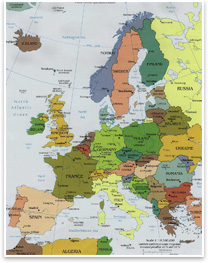
Summary: The AIA Continuing Education System (AIA/CES) Distance Learning program is seeking to form partnerships with European providers to develop professional development courses and make them available online. Course options by European providers will be in addition to the existing continuing-education opportunities available through AIA/CES. AIA distance learning to keep pace with technology Lowther believes that distance learning has grown rapidly over the last five years but thinks the AIA is poised to keep pace. “Architects now have many provider options. Competition is not coming just from our own field anymore—it’s coming from other sources. It used to be that whatever manufacturer knocked on the door of an architecture firm with training had 15 minutes to dump whatever information they had onto the architects,” Lowther says. “Architecture firms are now more sophisticated. What has changed is that architects can seek out specific manufacturers on the Internet worldwide—manufacturers that meet their specific need—before the project gets started and then take the course provided by that manufacturer. And they still get the learning units. It sounds so simple, but it wasn’t until the distance learning system came into effect and architecture firms began to say, ‘this can really help us with our business.’” “What has changed is that architects can seek out specific manufacturers on the Internet worldwide—manufacturers that meet their specific need. Online learning poses new, complex issues “Distance learning has become more complex,” says Lowther. “Architects can now say, ‘I don’t really care if it says UK, USA, or China—I’m going to take the best course.’ And the language barrier is starting to break down because it can be offered in many languages, or you get a translator for Webcasting. All of a sudden, it’s flattening out.” Webcasting broadens the picture Lowther also explains that testing further adds to the challenge. “Now take it a step further. The Cannon people said, ‘Oh, by the way, we are archiving this.’ I hadn’t written a test for this activity—I was to ask for live feedback—and archiving it requires another, different test altogether. So someone would have to develop a test evaluation, then a test evaluation for the archive. The next question was: Whose intellectual property will this become? And some kind of a contract would also be needed. You can see the complexity to this. None of that existed one or two years ago.” Where are we going? Lowther is betting that continuing ed will continue to expand: “The issue becomes: Why don’t we teach our clients too, not just our employees, through the Internet? The same training used to develop employees can be made available to the world, and a company can make a profit off of it,” he concludes. “That is the direction this is headed.”
|
||
Copyright 2006 The American Institute of Architects. All rights reserved. Home Page |
||
news headlines
practice
business
design
For more information on AIA’s CES providers go here.
Go here to AIA eclassroom

 AIA Online Continuing Education Seeks to Go European
AIA Online Continuing Education Seeks to Go European